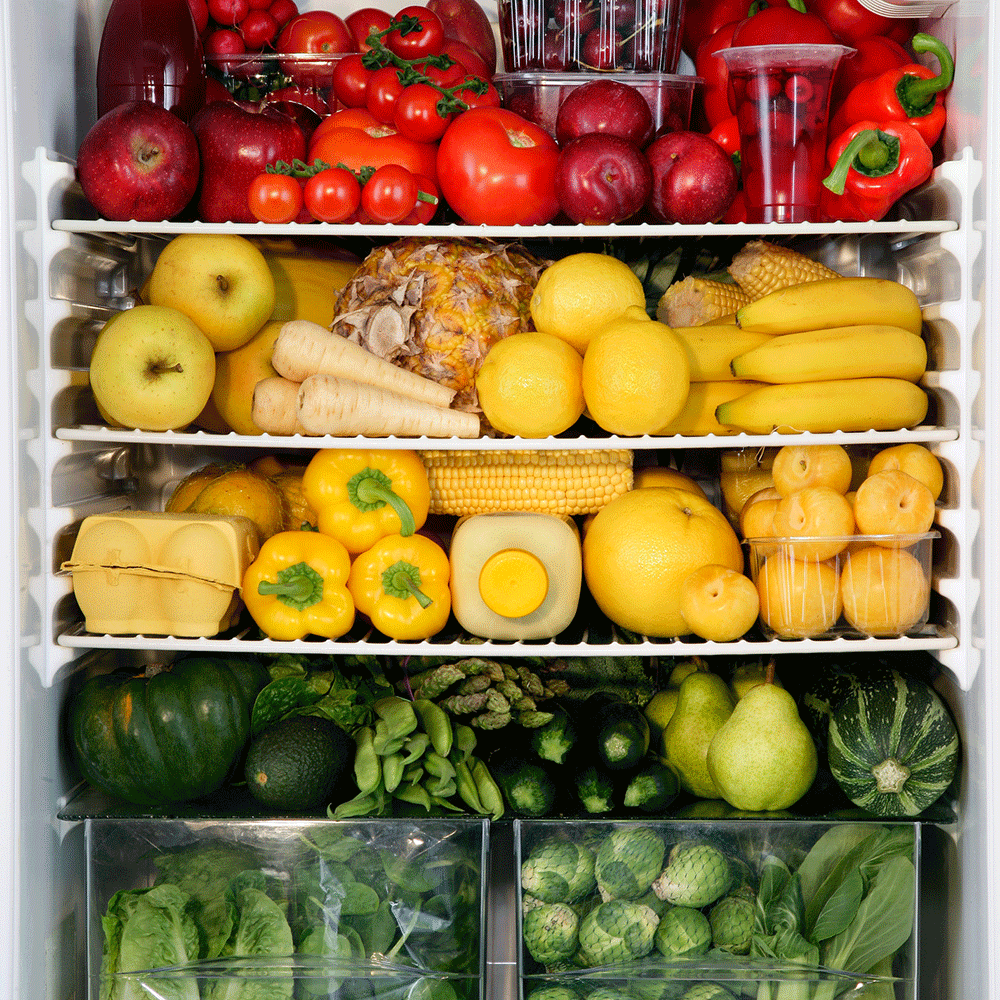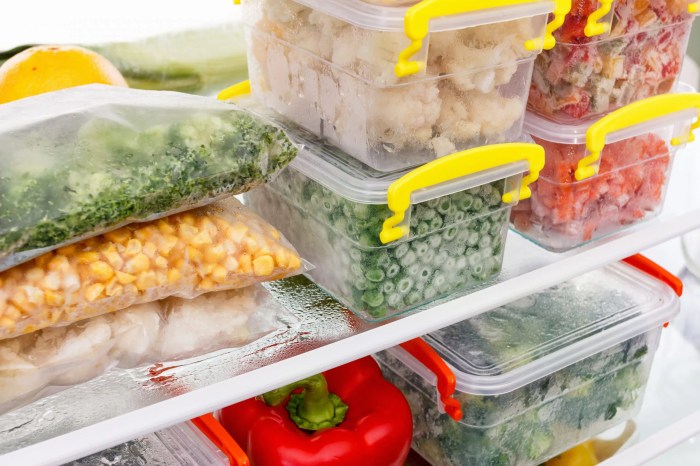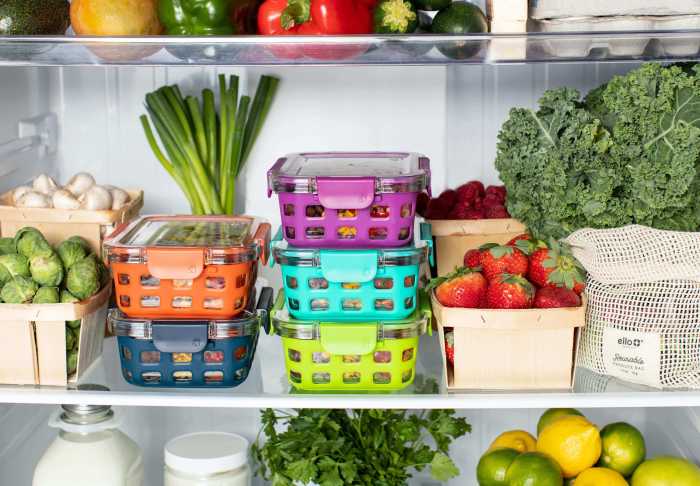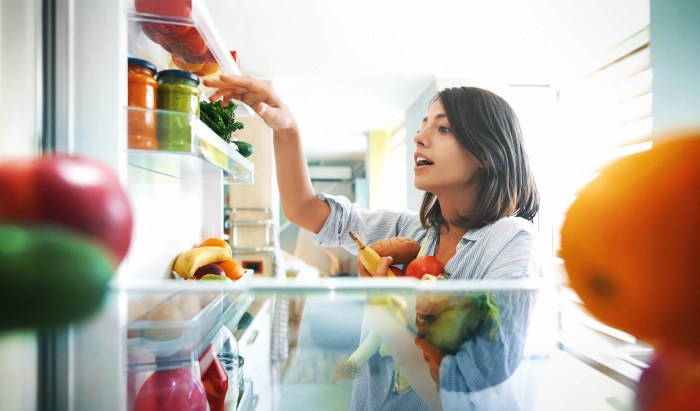How to Store Food Properly: 10 Tips for Keeping Food Fresh sets the stage for this informative guide, providing readers with essential insights on preserving food quality and safety.
Explore the best practices for storing fresh produce, differentiating between perishable and non-perishable foods, and organizing your pantry effectively to maintain food freshness.
Importance of Proper Food Storage

Proper food storage is crucial for maintaining the freshness, quality, and safety of food items. When food is not stored correctly, it can lead to spoilage, contamination, and potential health risks for consumers. Understanding the main factors that contribute to food spoilage and the impact of improper storage is essential for preserving the integrity of food products.
Main Factors Contributing to Food Spoilage
Improper storage conditions such as temperature fluctuations, exposure to light, humidity levels, and air circulation can all accelerate food spoilage. Microorganisms like bacteria, molds, and yeast thrive in environments where food is not stored properly, leading to rapid decay and deterioration of food quality. Additionally, enzymatic reactions within food can also occur more rapidly when not stored correctly, further contributing to spoilage.
Impact of Improper Storage on Food Quality and Safety
Improper food storage can have significant consequences on both the quality and safety of food items. Foods that are not stored at the appropriate temperature can promote the growth of harmful bacteria, increasing the risk of foodborne illnesses. Furthermore, exposure to light and air can cause oxidation of fats and nutrients in food, leading to changes in flavor, texture, and nutritional value. Overall, improper storage can result in food that is not only unappetizing but also potentially hazardous to consume.
Best Practices for Storing Fresh Produce

When it comes to storing fresh produce, following the right methods can help extend the shelf life of fruits and vegetables, keeping them fresh and flavorful for longer periods of time.
Storing Fruits
- Store fruits like apples, oranges, and berries in the refrigerator to maintain freshness.
- Keep fruits that emit ethylene gas, such as bananas and avocados, separate from other produce to prevent premature ripening.
- For fruits like tomatoes and peaches, store them at room temperature away from direct sunlight to preserve their flavor.
Storing Vegetables
- Leafy greens like lettuce and spinach should be stored in the crisper drawer of the refrigerator to maintain crispness.
- Root vegetables like carrots and potatoes should be stored in a cool, dark place with good ventilation to prevent sprouting.
- Mushrooms are best stored in a paper bag in the refrigerator to prevent them from getting too moist.
Ideal Storage Conditions
- Temperature: Most fruits and vegetables thrive in temperatures between 32-40°F (0-4°C).
- Humidity: Leafy greens and herbs prefer higher humidity levels, while fruits like apples and oranges do better in lower humidity environments.
- Air Circulation: Proper ventilation helps prevent moisture buildup, which can lead to spoilage.
Tips for Storing Perishable and Non-Perishable Foods

When it comes to storing food, it is essential to understand the different requirements for perishable and non-perishable items. Proper storage can help extend the shelf life of your groceries and reduce food waste. Here are some tips to help you store perishable and non-perishable foods effectively.
Storing Perishable Items
- Store dairy products like milk, cheese, and yogurt in the coldest part of the refrigerator to slow down bacterial growth.
- Wrap meats tightly in plastic wrap or foil to prevent air exposure and freezer burn. Store them in the coldest part of the fridge or freezer.
- Use airtight containers to store cut fruits and vegetables in the refrigerator to maintain freshness and prevent spoilage.
- Check expiration dates regularly and consume perishable items before they go bad to avoid food waste.
Organizing Non-Perishable Items
- Keep canned goods in a cool, dry place away from direct sunlight to maintain quality and prevent rusting.
- Store grains like rice, pasta, and oats in airtight containers to protect them from moisture and pests.
- Create a system for rotating non-perishable items in your pantry to ensure older items are used first before expiration.
- Label shelves or containers to easily identify different types of non-perishable foods and keep track of inventory.
Ending Remarks

In conclusion, mastering the art of proper food storage is crucial for extending the lifespan of your groceries and ensuring optimal taste and nutrition. Implement these tips to elevate your food storage game and enjoy fresh meals every day.